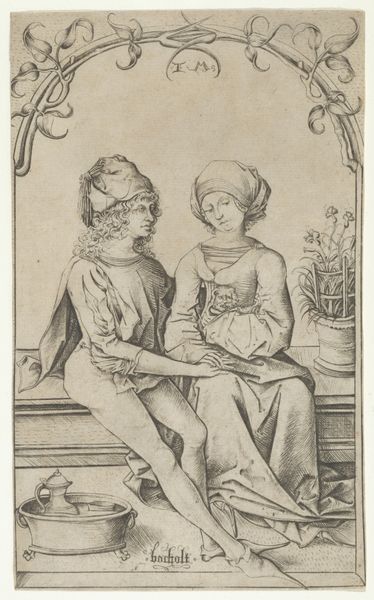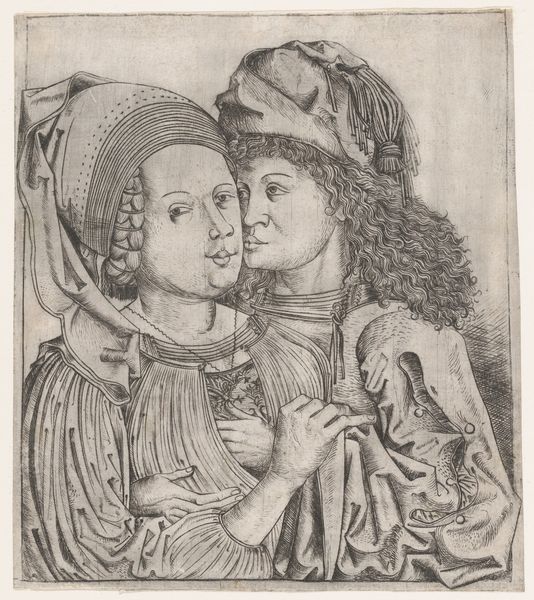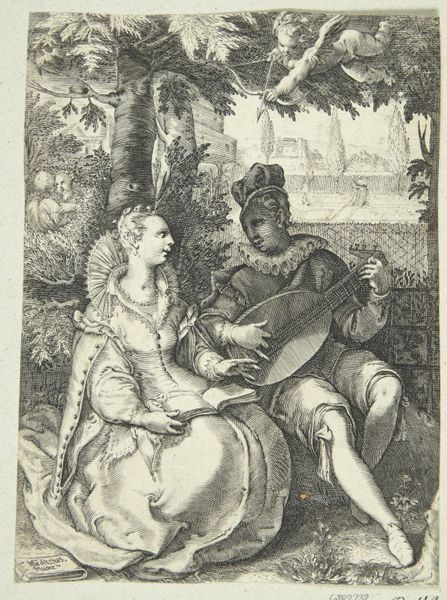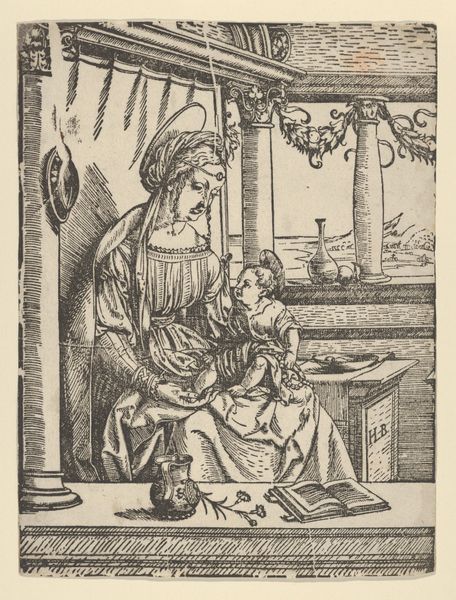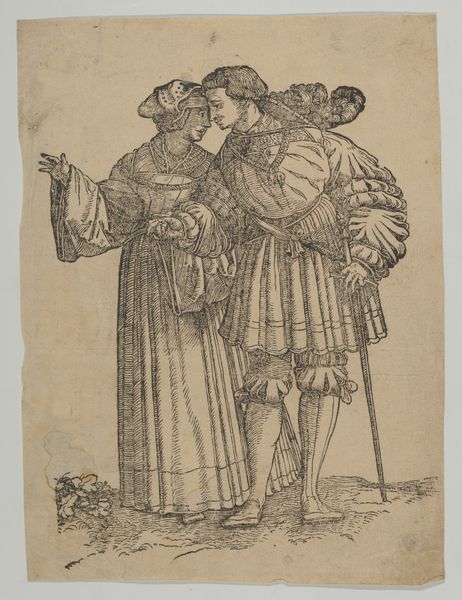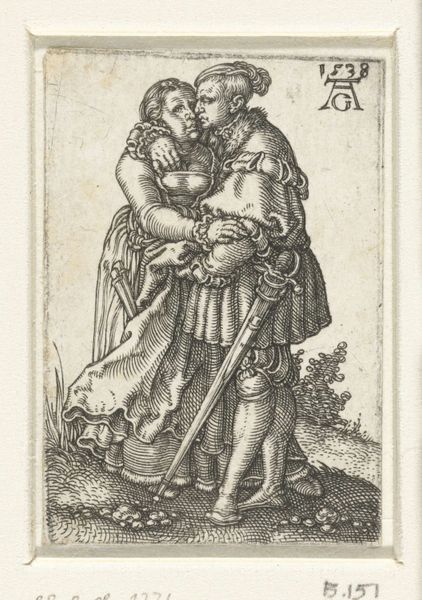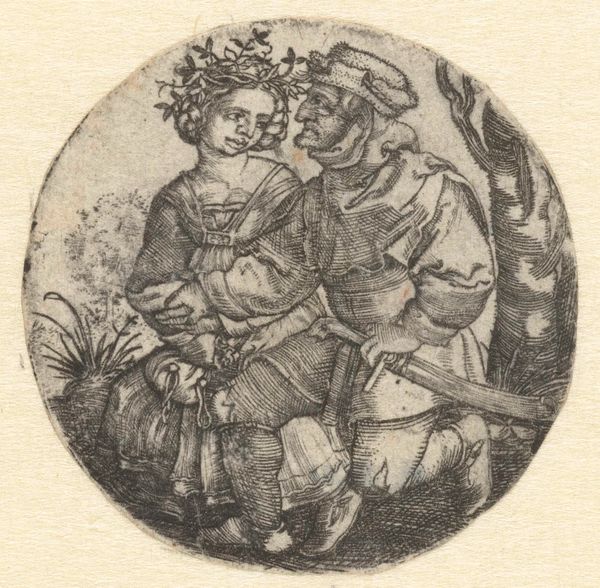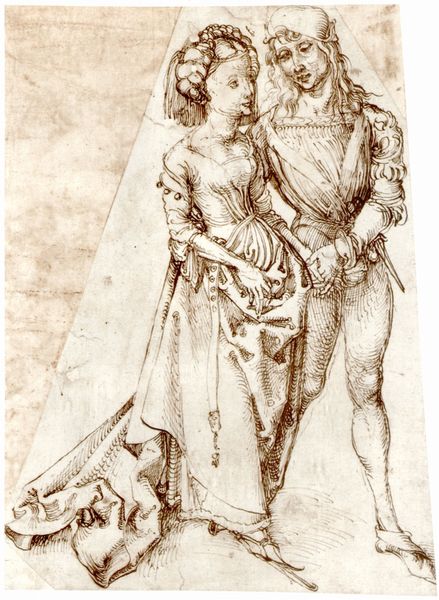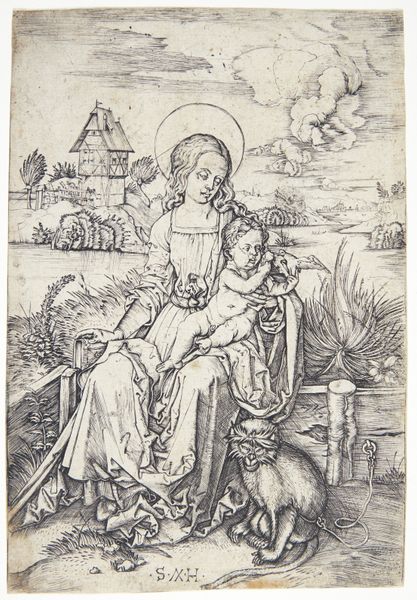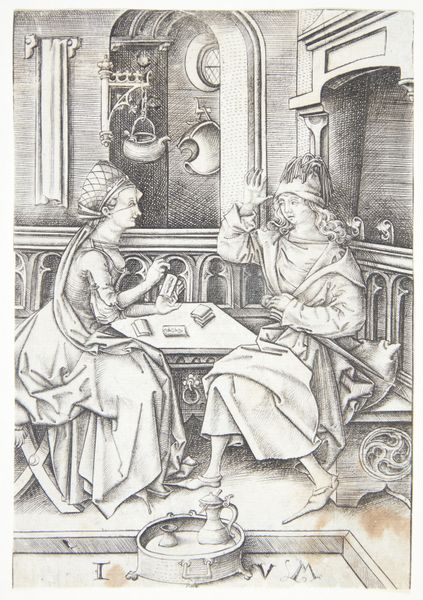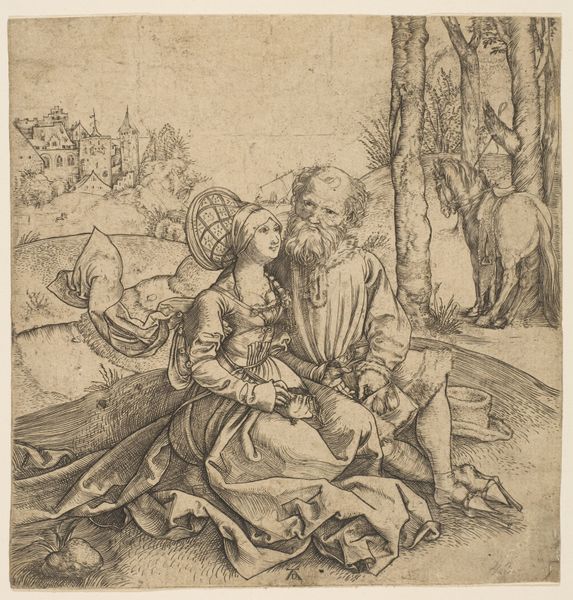
drawing, print, paper, ink, engraving
#
portrait
#
drawing
#
ink drawing
# print
#
figuration
#
paper
#
ink
#
genre-painting
#
northern-renaissance
#
engraving
Dimensions: 168 mm (None) x 108 mm (width) (bladmaal)
Curator: The delicacy of this drawing immediately strikes me. There's something very intimate about it. Editor: I agree. It's entitled "The Lovers" and comes to us from Monogrammist BxG around 1470-1490. It's an ink engraving on paper. It resides in the collection of the Statens Museum for Kunst, in Denmark. Curator: Let's look closer at that ink work. Notice the cross-hatching to create shading. It’s intriguing how such a basic printmaking technique gives such depth and realism. But it must have been a long and painstaking process to prepare the plate. Editor: Definitely. And thinking about this piece in terms of Northern Renaissance printmaking—prints like this democratized art to a degree. They weren't just for the wealthy anymore, fostering a growing art market and allowing for a broader audience to interpret these visual narratives. How do you see its context informing the interpretation? Curator: Well, prints like these weren’t exactly *cheap*, but more accessible to merchant classes and skilled tradesmen, yes. They helped fuel aspirations and were luxury items showcasing worldly taste and disposable income. The material fact that such items become aspirational themselves is part of their appeal, regardless of the ostensible narrative. Look at the bath items to the lower left, or the plants off to the right of the mother. They are accoutrements, signifiers of comfort. Editor: I think your point on those specific items is interesting in relation to marriage practices during this time as well. I see an affirmation of family values being subtly pushed forward. Marriage and family, legitimized through religious and civil institutions. How does that narrative or intention, compare to contemporary understandings of “love”? Curator: I agree, we must be cautious not to project contemporary notions of "love" onto the piece. This feels more akin to an arrangement of societal expectations and burgeoning family wealth than necessarily about passion, which speaks volumes to the means of social power at the time of its production. Editor: Absolutely, this image, reproduced in multiple iterations through the printmaking process, helped solidify social norms surrounding relationships and prosperity. Curator: Precisely. That contrast of process, subject, and wider socio-political narrative are very compelling. Editor: It gives me much to consider, reflecting on both art history and our modern experience.
Comments
No comments
Be the first to comment and join the conversation on the ultimate creative platform.
